Uncertain times, alright⚠️ pay per crawl🌐💰 gemini cli💻 mosquito drone🦟 nanospresso🧬 robot-on-robot⚔️ skip🦿 plastic into paracetamol♻️💊 airloom💨⚡ #2025.26
The illusion of the illusion of the illusion of thinking💭💭💭
Welcome to this week's Memia scan across AI, emerging tech and the exponentially accelerating future. As always, thanks for being here!
Big one this week… grab a coffee and strap in.
ℹ️PSA: Memia sends *very long emails*, best viewed online or in the Substack app.
🗞️Weekly roundup
The most clicked link in last week’s newsletter was: Andrej Karpathy’s fantastic talk at Y Combinator Startup School: Software Is Changing (Again). One of the most cogent framings of the current AI moment to date, highly recommended if you haven’t watched it already.
🧑🎓Oxford X AI
This week I’m back in the beautiful city of Oxford, UK, combining a few speaking engagements with carving out some heads-down coding time for the Sensorium next release.
Today it was my privilege to give a guest lecture to the 2025 cohort on the Saïd Business School Executive Diploma of Artificial Intelligence programme. Thanks to the SBS team for the invitation: it was great to meet everyone and I hope a few of my 186 slides were useful! 😅1
(I always try to localise my cover slide background image to the place or context of where I’m speaking - here’s my “vibe” re-imagining of what might happen when Oxford University’s centuries-old architecture meets artificial superintelligence — are those floating AI datacentres in the sky?
“Science-fiction-style futuristic high-rise architecture, covering the whole background horizon, with traditional Oxford University buildings and the Radcliffe Camera in the foreground” -- Midjourney 7 X Midjourney V1
(Animated using Midjourney’s new V1 video generation, very powerful, easy-to-use tool. My $10/month MJ subscription safe for another few months…)
🔁ICYMI
Also this week, On the other side of the world, I was quoted in this story by Chris Keall in the NZ Herald: Anthropic study reveals AI agents could go rogue, resort to blackmail or corporate espionage if threatened with shutdown. My 2¢:
“We’ve always known that AI large language models will have powers of persuasion - the only difference now is that the risk levels have increased as the models become more and more ‘intelligent’,” says Ben Reid, a futurist who was the founding executive director of local industry group AI Forum NZ and now runs his own consultancy.
“Now in mid-2025, agentic AI systems are at a crossover point where they can increasingly use superhuman powers of persuasion - potentially personalised to every individual - to achieve a specific outcome or action.”
The primary use-cases so far are ‘buy this product or service’ or ‘vote for this political party’, Reid says.
“But we should have our eyes wide open for uber-personalisation leading to epistemic rabbit-holes which may go deep and create ‘personal reality bubbles’ that could induce human individuals to unlawful action at scale.”
No one will be able to spot an AI
Reid adds: “In my view, likely no one - even those of us who pride ourselves on our critical thinking skills - will be able to tell whether an AI is attempting to manipulate them - unless we are augmented with AI tools which explicitly identify manipulation attempts and tell us.”
The futurist has developed an interest in the emerging field of tools to spot AI content, or when you’re interacting with an AI.
But he says there should also be a role for Governments in validating what’s real, and setting limits on AI models’ goals.
Arguably this should be a new function of the state itself - to provide citizens with technology which helps them to evaluate and verify information they come across online. The market is unlikely to solve this issue as current profit-oriented incentives are misaligned.
“Right now, the large commercial AI companies are all opaque as to how their models are trained, optimised and how ‘guardrails’ are set,” Reid says.
“With the exception of European AI company Mistral, the leading AI companies are all large US or Chinese companies with shareholder and national security obligations to those countries. Are these goals entirely aligned with the wellbeing of users in Aotearoa? I’m not so sure.”
Reid is advocating for investment in transparent, open-source, “sovereign” AI “to reduce dependency on US and Chinese commercial AI - because otherwise Aotearoa may suddenly find itself manipulated by AI into decisions that are not in its citizens’ long-term interests”.
(I was trying to sound measured but instead come across full-on doommonger, eh…🫣🤪)
⚠️Uncertain times, alright
The World Uncertainty Index (WUI) has surged to record levels in 2025, with the global uncertainty measure skyrocketing to 77,998 in May - the highest recorded value since tracking began in 2008.
(The index is a pretty blunt instrument, analysing uncertainty-related language in Economist Intelligence Unit country reports across 143 nations… but nonetheless an indicator that *something’s up*.)
(Annotated with global events up to April below - 🎩 Roger Dennis for sharing)
Trade uncertainty in particular has exploded, jumping from modest levels in early 2024 up to 23,030 in May 2025, indicating severe global trade disruption. (I wonder why…?)
🚨Preparing for global catastrophic risks
On a similar theme… shout-out to Aotearoa-based catastrophic risk researcher Matt Boyd for his writeup of attending the 2025 European Urban Resilience Forum in Rotterdam.
His main observation is that while European cities excel at climate adaptation…they have a blindspot to the polycrisis, ignoring 13 other global systemic stresses that could trigger cascading failures:
“The narrow focus on climate mitigation and adaptation becomes particularly problematic ... A recent Cambridge Centre for the Study of Existential Risk (CSER) paper highlighted the crucial intersection between global systemic risk and global catastrophic risk. Nuclear war, extreme pandemics, and supervolcano eruptions don’t just interact with existing vulnerabilities—their effects can amplify through global systems to produce catastrophic outcomes. These systems include many that are not traditionally considered in climate change mitigation and adaptation thinking.“

(The post is New Zealand-centric but applicable to all countries… definitely worth building these into one’s model, I think.)
📈The week in AI
Some AI diffusion signal-spotting…
🏃♂️Non-military AI arms races
AI floods recruiters with fake job applications Recruiters are facing an unprecedented surge in AI-generated job applications, with LinkedIn experiencing a 45% jump in submissions this year and processing 11,000 applications per minute. Job seekers increasingly use ChatGPT and similar tools to create resumes packed with keywords from job descriptions, making it difficult for recruiters to identify genuinely qualified candidates.
In turn, HR departments are turning to chat and video interviews—sometimes conducted by AI —to filter through the "fake resumé sludge," while some applicants are countering by using chatbots to generate real-time interview answers.How will this change recruitment strategies in future if it’s impossible to identify genuine candidates without time-consuming F2F interviews?
(Conversely: If AI passes the interview questions, why wouldn’t you hire it?)
Chinese students use AI to outsmart AI detectors: Chinese universities have implemented AI detection tools requiring student essays to contain no more than 15-40% AI-generated content, but the systems are producing widespread false positives — ironically creating a surge in AI tool usage.
Apparently, some students who wrote papers themselves or used minimal AI assistance report failing the tests, with some flagged as 50% AI-generated despite original work.
In response, a profitable industry is emerging offering AI-powered "humanisation" services to beat detection systems, with some platforms both detecting and helping circumvent AI content. Students are paying US$10-100 for rewriting services or "dumbing down" their writing with awkward phrasing to pass checks.
⚖️AI regulation news
📚AI and copyright
The AI world is a topsy-turvy place this week:
US Judge backs Anthropic's fair use defence for AI training Major news on the AI/copyright battlefront this week: a federal judge in the US delivered a landmark ruling favouring Anthropic in a copyright lawsuit, the first time a US court has determined that training AI models on copyrighted books without author permission constitutes "fair use" under US copyright law. The BBC sums up:
“In his ruling, Judge William Alsup said Anthropic's use of the authors' books was "exceedingly transformative" and therefore allowed under US law.
But he rejected Anthropic's request to dismiss the case, ruling the firm would have to stand trial over its use of pirated copies to build its library of material.“
(But does that last bit mean that Anthropic, OpenAI and any other AI model providers will need to pay retail price for every book in their training data set!?!)
(Also note: the “fair use” concept doesn’t exist in many jurisdictions outside the US…)
Beijing court sentences AI copyright infringers to prison A Beijing court has sentenced four individuals to up to 18 months in prison for using AI software to infringe on copyrights: the first criminal ruling in Beijing involving generative AI copyright violations. The defendants used AI to alter original online illustrations and created over 3,000 jigsaw puzzles for sale, generating profits exceeding 270,000 yuan (US$37,556). The case began when an illustrator discovered her artwork being sold without permission and reported it to police in May 2024.
Under Chinese criminal law, reproducing and distributing copyrighted work without permission for substantial profit can result in up to three years imprisonment and fines. (Who knew?)Denmark grants copyright to faces and voices Denmark plans to become the first European country to legislate people copyright ownership of their own facial features, body, and voice to combat deepfakes. The Danish government secured broad cross-party support from 9 out of 10 MPs to amend copyright law, defining deepfakes as realistic digital representations of people including their appearance and voice.
“In the bill we … are sending an unequivocal message that everybody has the right to their own body, their own voice and their own facial features, which is apparently not how the current law is protecting people against generative AI.” — Danish culture minister, Jakob Engel-Schmidt
US Senate drops plan to ban state AI laws
The US Senate voted 99-1 to remove a controversial 10-year moratorium on state AI regulation from the Republican “One Big Beautiful” budget bill, only a short time after it was added.
The OBBB actually passed the Senate by a narrow margin soon after… see 🌊💩Flooded Zone further down….
Digital taxes disrupt global trade negotiations
Digital taxes are emerging as a major friction point in global trade negotiations, with the US aggressively pushing back against these levies targeting American tech companies.
Canada agreed to rescind its digital services tax to revive trade talks after President Trump canceled negotiations, calling the policy a "direct and blatant attack" on US interests.
The European Union faces internal pressure as it considers softening its digital tax implementation—while Brussels is showing signs of caving in, European parliamentarians and the EU's competition chief are pushing back against any weakening of the rules.
(The US intimidation seems to be working…which country is going to advance digital services tax legislation now?)
🎈Bursting the AI Agent bubble
Two voices expressing healthy scepticism about the current Agentic AI hype recently:
Signal CEO Meredith Whittaker pulls apart what’s really needed for AI agents:
”There's a real danger we're facing with the introduction of agentic AI into our devices and lives, primarily because we're giving these systems extensive control that requires access to vast amounts of personal data. The value proposition sounds appealing—an AI that can look up a concert, book a ticket, schedule it in your calendar, and message all your friends—but consider what this actually requires. The system would need access to your browser with the ability to control it, your credit card information to pay for tickets, your calendar to see everything you're doing and everyone you're meeting, and access to Signal to send messages to your friends. It would need root-level permissions across your entire system, accessing every single database, probably in the clear since there's no viable model for doing this encrypted. If we're talking about a sufficiently powerful AI model, it's almost certainly not happening on-device (and on-device processing wouldn't solve most of these issues anyway)—instead, your data is being sent to a cloud server for processing. This creates a profound security and privacy issue that haunts the hype around AI agents. It threatens to break the blood-brain barrier between the application layer and OS layer by conjoining separate services, muddying their data, and undermining privacy protections like your Signal messages—all because the agent needs to access, extract, and summarize that data so your brain can "sit in a jar" while you're not actively managing these tasks yourself. Beyond the broader concerns about AI being predicated on surveillance models, there's an immediate issue of how AI systems are poised to undermine privacy and security guarantees in the name of creating a magic genie bot that handles life's exigencies.”
“Hype Exorcist” Georg Zoeller his usual caustic, spot-on self:
🏭AI industry news
Companies making the AI news this week:
🌐💰Cloudflare
Cloudflare has launched "Pay per Crawl," an experimental marketplace that allows website owners to charge AI companies for scraping their content. The marketplace operates on a micropayment system where publishers set individual rates for each "crawl" by AI bots, with Cloudflare acting as the intermediary for transactions.
Major publishers including Conde Nast, TIME, The Associated Press, and The Atlantic have partnered with Cloudflare to block AI crawlers by default, requiring explicit permission for access. Furthermore, new Cloudflare websites will automatically block all AI crawlers unless owners grant specific permissions, giving publishers "the default of control" over their content.
The timing addresses a critical imbalance where OpenAI's crawler scrapes websites 17,000 times per referral compared to Google's 14 times per referral — by inference, pure AI companies are extracting massive value while providing minimal traffic back to publishers.
The marketplace could become particularly valuable in an "agentic" future where AI agents browse websites on behalf of users, potentially eliminating direct site visits entirely and threatening traditional ad-revenue models that depend on user traffic.
Memia narrative: This is possibly the most significant AI development in recent years and could fundamentally alter the economics of AI development.(And potentially the Internet itself, which has always been missing micropayments and hence has had to rely on paid advertising and “free attention” to fund its business models.)
Going forward adding these paywalls could actually enable more efficient markets for “new knowledge”. Not all tokens will be equal: AI-generated slop … pretty cheap or free to crawl … whereas high-signal creators, scientists, authors, news aggregators - pay more, make your bid.
(Acknowledging that this is shutting the stable door well after the horse has bolted: the entire corpus of digitised human-generated data to date is mostly within the foundation model training sets —and is effectively open-sourced in practice if not in copyright law. Hopefully this approach could also help to maintain more open access for humans rather than forcing paywalls for all…)
I’m thinking that markets for attention could also also leverage this infrastructure: if micropayments can be enabled for AI crawling… surely micropayments can be enabled for viewing ads as well: You want my attention? Bid high…
(Both use cases would need some kind of “proof of human” token in the infrastructure.)
Cloudflare, eh? Who’d have thought it.
🔍Google
An interview with Google's head of search Liz Reid (no relation) in which she outlines how the company is planning to navigate the AI transformation while maintaining its core business model. Reid positions AI as enhancing rather than replacing traditional search, allowing users to ask longer, more complex queries (2-3x longer in AI mode) while maintaining access to web sources for deeper exploration.
However Google is showing signs of losing market share to ChatGPT and other AI search engines:

Coatue via Exponential View
Google pre-orders 200MW fusion energy for 2030s
Google has signed a groundbreaking (but speculative!) agreement with Commonwealth Fusion Systems (CFS) to purchase 200 megawatts of fusion electricity from the world's first grid-scale nuclear fusion plant. The ARC facility in Chesterfield County, Virginia is promising to generate 400 megawatts of zero-carbon power by the early 2030s—enough to power 150,000 homes—with Google receiving around half the output.
CFS has raised US$2 billion and must now prove net energy gain before commercial deployment.
Microsoft and Helion signed a similar deal in 2023, with Helion aiming to provide 50MW of fusion power by 2028.
Memia narrative: Colour me sceptical on the timing of both deals… the science and engineering around stable nuclear fusion is still very early, even with AI accelerating everything!
👥Meta
As flagged last week, Meta CEO Mark Zuckerberg has splashed out millions on a "superintelligence team" of nearly two dozen AI researchers poached from rival companies including OpenAI, Anthropic, and Google. The new organisation, called Meta Superintelligence Labs (MSL), will be led by Scale AI CEO Alexandr Wang as chief AI officer and former GitHub CEO Nat Friedman as co-leader, following Meta's US$14.3 billion investment in Scale AI.
Notable hires include key creators of OpenAI's o-series models, GPT-4o voice mode, and ChatGPT, Google DeepMind principal researcher Pei Sun (also responsible for and Waymo’s perception models) and Anthropic engineer Joel Pobar.
Nice work if you can get it.
🍎Apple
After rumours last week that Apple is considering acquiring Perplexity, this week it emerged that the company is also kicking other tires, reportedly considering partnering with OpenAI and Anthropic to power an upgraded version of Siri — effectively ending its sole reliance on in-house AI technology for “Apple Intelligence”.
Apparently internal morale has suffered among Apple's 100-person AI team, with key talent departing and others threatening to leave for competitors offering US$10-40 million annual packages, while Apple pays roughly half the market rate. Oof.
Meanwhile financial negotiations with Anthropic have stalled over the startup's demand for multibillion-dollar annual fees that increase sharply each year.
Memia narrative: I interpret this as leverage for haggling on the price of the Perplexity deal … and maybe buying some time to integrate the Perplexity team post-acquisition. It’s surely unlikely that Apple intends to be beholden to 3rd party core technology providers — at least one of which is also entering the device game…
💾Oracle
Oracle shares surged to a record high of US$218.63 after the database giant announced a massive US$30 billion cloud computing contract that will begin generating revenue in 2028. The deal represents nearly triple Oracle's annual revenue from its fastest-growing data center division. (The contract likely connects to Oracle's partnership with OpenAI and SoftBank's US$500 billion Stargate data centre project, with Oracle pledging $7 billion and planning to spend roughly $40 billion on Nvidia chips for the first series of data centers in Texas.)
(I saw someone refer to Oracle as a leveraged real-estate business the other day… not far off the mark…!)
💰xAI
Elon Musk's AI company xAI has secured a massive US$10 billion funding round through a combination of US$5 billion in debt and US$5 billion in strategic equity, as confirmed by Morgan Stanley. The new funding brings xAI's total capital raised to approximately US$17 billion.
Now… where will that revenue come from???
🪄Genesis AI
Startup Genesis AI emerged from stealth with a sizeable US$105 million seed round to build foundational AI models for robotics. The startup, founded by Carnegie Mellon robotics Ph.D. Zhou Xian and former Mistral researcher Théophile Gervet, tackles the expensive challenge of training robot AI by using synthetic data generated through a proprietary physics engine rather than costly real-world data collection.
The company’s teaser video from late last year is a regular talking point in my presentations — big implications for real-world simulations:
📊AI industry data
Finally, according to a new Menlo Ventures report on Consumer AI, AI are missing out on US$420B as consumers avoid paid subscriptions.
97% of the 1.8 billion AI users worldwide access tools for free, but the current AI market generates only US$12 billion annually, representing just 3% of its theoretical US$432 billion potential if users paid an average US$20 monthly subscription.
Interesting data on which models are most used as well - Alexa and Siri still have significant market share despite being, er, *not the brightest*:
Naturally this VC fund report believes that this 97% freemium model represents:
“…a massive opportunity for specialized tools to unlock more value.”
More paywalls going up soon?
Memia narrative: for the largest AI companies this is mostly a strategic question of aggressively growing user numbers to gain share… while there’s so much free VC sloshing around who needs revenues, anyway?
Plus, if we take Sam Altman and Dario Amodei’s public pronouncements at face value, there is an aspect of maintaining social licence and not increasing digital inequity even further.
But mostly… perhaps the longer term prize of plugging in a few billion human brains to your model is larger than a few hundred billion dollars in the next few years?
(However, with open-source AI rapidly playing catchup …. people will always have the option to run open-source models on their own devices for most day-to-day use cases?)
🆕 AI releases
Just a skim this week… I’m still playing with Midjourney V1 which has been keeping me distracted from the feeds…
💻Gemini CLI
Google launched Gemini CLI (Command Line Interface), its open-source AI coding agent - a direct play against the massively successful Claude Code from Anthropic.
Key features include:
Free access to Gemini 2.5 Pro
Usage limits of 60 requests per minute and 1,000 daily requests using a personal Google account, or professional developers can upgrade to usage-based billing through Google AI Studio or Vertex AI keys
Built-in tools for web search integration, Model Context Protocol support, and workflow automation,
Open-source released under Apache 2.0 license.
Here’s a snapshot of its system prompt:
Gemini Code Assist, enabling AI assistance in both terminal and VS Code environments.
Extensive customisation options through system prompts and settings for enhanced capabilities and simultaneous agent operations.
Adoption has gone crazy….
(On my list to try immediately after pressing “send” today!)
If you’ve never written a line of code before, now is the time to try it out.
🖥️AG-UI
AG-UI has emerged as a promising open-source protocol designed to seamlessly integrate AI agents into frontend applications. The project focuses specifically on agent-user interaction protocols rather than backend AI infrastructure, aiming to mak AI agents more accessible to frontend developers who may lack extensive machine learning backgrounds.
AG-UI aims to be complementary to agent coordination protocols including A2A and MCP:
🥼 AI research
Out of the lab…
👩⚕️Microsoft MAI-DxO
Microsoft unveiled its "AI Diagnostic Orchestrator" (MAI-DxO) (snappy name), claiming the system outperforms human doctors 4X in diagnosing complex medical cases, achieving an 85.5% success rate compared to doctors' 20% in trials using 304 challenging cases from the New England Journal of Medicine.
The system employs five AI agents acting as “virtual doctors” that debate and collaborate to reach diagnoses, utilising leading language models from OpenAI, Meta, Anthropic, Google, xAI, and DeepSeek. Interesting nugget via the FT:
“Suleyman said that while OpenAI’s model performed the best, Microsoft was “agnostic” over which of the four “world-class models” MAI-DxO used.“
This release marks the first major initiative from Microsoft's AI health unit, led by former DeepMind co-founder Mustafa Suleyman, which aims to achieve "medical superintelligence" to address healthcare staffing shortages and waiting times.
Microsoft plans to integrate versions of this technology into its Copilot AI chatbot and Bing search engine, which currently handle 50 million health queries daily — although researchers emphasise it’s not ready for clinical deployment quite yet.
🔮Anthropic Economic Futures Program
Anthropic launches its Economic Futures Program on Friday to study AI's economic impact after CEO Dario Amodei predicted AI will eliminate 50% of entry-level white collar jobs within five years. The program will award 20-50 global research grants of up to $50,000 each and provide free access to Anthropic's AI tools to researchers studying AI's effects on GDP, technology adoption rates, and labour market changes:
“Why This Matters Now
The economic questions raised by AI are both urgent and complex. Policymakers and industry leaders need a rigorous view of what’s actually happening as AI adoption continues to expand across global labor markets and workplaces. There's no shortage of opinions about AI's economic outcomes. We believe it's fundamental to ground these conversations in real-world data and invest in ongoing empirical analysis to track AI usage trends over time. That’s why we launched the Economic Index –publishing research and public datasets on AI usage across the economy–as a first step.
But we recognize that publishing data alone is not enough. We must also discuss potential solutions for managing AI’s impact on the economy and work. The proposals and frameworks we’ll need for the AI-enabled economy will require policymakers to consider fundamental questions about work, meaning, and what we want from the economy. There are already early signs of AI’s impact on the workforce. This is why we need research that keeps pace with AI’s development, to understand in real-time where this technology is creating economic opportunity—new jobs, increased productivity, novel forms of value creation—as well as where it might be causing dramatic shifts in labor dynamics. We believe this kind of effort can equip policymakers and broader society to successfully navigate the future.”
The initiative aims to be politically agnostic (good luck with that…) and fund diverse researchers worldwide.
⚡Energy and AI
I missed this comprehensive 304-page IEA report when it was released in April: Energy and AI.
The report models data centre growth and energy usage out to 2035. Good grounding fact: although AI energy use will be significant, it’s nowhere near the largest contributor to future energy demand behind conventional industry and transport:
In the most extreme case, the IEA has global data centre electricity more than triple to ~1.7TWh / year in their “Lift-Off” scenario:
The report also goes into considerable detail on ways in which AI can be used to dramatically reduce global carbon emissions — despite its massive energy consumption, with potential savings exceeding the European Union's entire annual carbon output by 2035, for example AI applications could generate billions of tonness in carbon savings annually through improved energy forecasting, that optimises supply and demand fluctuations across power grids.
🕰️AI as humanity's historian?

Historian Marnie Hughes-Warrington's new book "Artificial Historians" examines how AI systems are inadvertently becoming humanity's primary record-keepers, generating "most of the histories made around the globe" on a daily basis — while raising critical concerns about transparency and bias in historical documentation:
AI systems lack the methodological transparency that defines traditional historical scholarship, creating archives without revealing how sources are selected, weighted, or interpreted.
These systems risk amplifying historical inequities by training on biased datasets and may miss information that isn't computable or easily digitised.
AI platforms typically provide conventional, limited responses to historical questions, lacking the nuanced understanding that human historians develop through contextual analysis and critical thinking.
Hughes-Warrington argues that rather than viewing AI as purely threatening, historians should actively engage in AI development to ensure these systems reflect historical complexity and fairness.
🎮ChatGPT can pilot spacecraft
Researchers successfully tested ChatGPT's ability to pilot spacecraft in a simulated competition, with the AI model placing second in the Kerbal Space Program Differential Game Challenge. The team developed a novel approach that translates spacecraft status and mission goals into text prompts for the large language model, then converts the AI's text-based recommendations back into functional spacecraft control code.
Memia narrative: Off-the-shelf AI models could enable autonomous space exploration without extensive custom training requirements.
So can foundation models be used as the basis for other autonomous control tasks?
📊LLM inference speed-cost tradeoffs
Epoch AI is such a trove of contemporary data on AI. In the latest publication, researchers analyse the economics of large language model inference, revealing critical bottlenecks and optimisation strategies as AI inference demand grows 3x annually at major companies.
“We investigate how speed trades off against cost in language model inference. We find that inference latency scales with the square root of model size and the cube root of memory bandwidth, and other results.“
🧠Cognitive Core
Andrej Karpathy is on fire with his insight-drops right now…his latest tweet envisioning a future "cognitive core" LLM architecture, prioritising reasoning capabilities over encyclopaedic knowledge, designed to run locally on personal devices:
🏆Kimi-Researcher beats Gemini on world's toughest AI exam
Moonshot AI's Kimi-Researcher has achieved a breakthrough 26.9% Pass@1 score on Humanity's Last Exam (HLE), decisively outperforming Google's Gemini and marking a significant leap from its previous 8.6% baseline through agentic reinforcement learning that enables autonomous planning and reasoning across over 200 web pages per task.
⏳AI 2027 … 2028 …. sometime?
Pseudonymous computational physicist titotal published a comprehensive critique of the viral AI 2027 timeline forecasts to ASI (covered in Memia 2025.14)
In A deep critique of AI 2027’s bad timeline models, titotal argues that the mathematical models underlying the project's prediction of superhuman AI coders by 2027 are fundamentally flawed. There’s lots of mathematical criticism, but also this goes hard:
“One of the AI 2027 authors joked to me in the comments on a recent article that “you may not like it but it's what peak AI forecasting performance looks like”. Well, I don’t like it, and if this truly is “peak forecasting”, then perhaps forecasting should not be taken very seriously. Maybe this is because I am a physicist, not a Rationalist. In my world, you generally want models to have strong conceptual justifications or empirical validation with existing data before you go making decisions based off their predictions: this fails at both.
I’m not against people making shoddy toy models, and I think they can be a useful intellectual exercise. I’m not against people sketching out hypothetical sci-fi short stories, I’ve done that myself. I am against people treating shoddy toy models as rigorous research, stapling them to hypothetical short stories, and then taking them out on podcast circuits to go viral. What I’m most against is people taking shoddy toy models seriously and basing life decisions on them, as I have seen happen for AI2027. This is just a model for a tiny slice of the possibility space for how AI will go, and in my opinion it is implemented poorly even if you agree with the author's general worldview.”
Take THAT!
🔮[Weak] signals
Meanwhile in the world outside AI…
🇬🇧📱🏛️UK launches government super app for public services
The UK government launched a new mobile “super app” designed to streamline access to thousands of public services. Technology Secretary Peter Kyle unveiled the gov.uk app for iPhone and Android devices, which will initially operates in "beta" mode by providing shortcuts and bookmarks to existing government websites across 11 key service areas including benefits, healthcare, parenting, tax, and travel.
The app is part of a broader cost-cutting strategy that aims to deliver up to £45 billion in annual savings through digitisation, AI implementation, and replacing postal communications with online channels.
Future features planned include an AI chatbot developed with Anthropic and digital driving licenses by end of 2025
The UK joins countries like India, Poland, Ukraine, and Singapore in offering comprehensive government "super apps".
📱Consumer tech
Unihertz Titan 2
For those nostalgic about Blackberry…. the new Unihertz Titan 2 is an Android phone that combines nostalgic physical keyboard design with modern specifications.
Kickstarter early bird pricing starts at US$269 (down from US$399 retail) with October shipping planned, targeting productivity-focused users who miss physical keyboards.Fairphone: smartphone ←→ dumbphone
Fairphone’s new Gen 6 smartphone features a unique physical slider that instantly transforms the device into a "dumbphone" by activating Fairphone Moments, a distraction-free interface that blocks notifications and displays only essential apps and contacts. €599 ($694) device targets sustainability with a modular design, responsibly sourced components, user-replaceable parts (cameras, screen, battery, speakers) requiring only a screwdriver, and promises seven OS upgrades lasting until 2033.
💼 Enterprise software
Headless ERP
Tailor, a San Francisco and Tokyo-based startup, recently secured US$22 million in Series A funding to advance its "headless" ERP platform called Omakase.
The company differentiates itself by separating the user interface from the ERP core, enabling greater customisation and allowing AI agents to access the system via API for task automation.
Founded in 2021, the company has grown from 10 to 50 employees and operates in both the US and Japan. The funding will accelerate US market expansion and scale Japanese operations to compete against legacy giants like SAP and Oracle in the increasingly modular ERP landscape.Memia narrative: this sounds eminently sensible … unbundled “headless” ERP-as-API is long overdue to deliver flexibility and bring some competitive tension to this inertial enterprise software backwater. ( How long until “Build me an ERP” is just a vibe-coding prompt that you enter into ChatGPT…? )
⚔️On the battlefield
Robot-on-Robot
The Economist looks into Ukraine’s development of unmanned ground vehicles (UGVs) as it prepares for potential robot-on-robot warfare. The country’s military announced plans to deploy 15,000 ground robots to compensate for manpower shortages against Russia's numerical advantage. About 40 Ukrainian firms currently produce 200 UGV models across three categories: logistics (transport, evacuation), engineering support (mine operations, communications), and combat support (weapons platforms, drone hunters).
Fibre-optic drones turn Ukrainian forests into wire webs
Fibre-optic drones are transforming warfare in Ukraine, creating vast webs of cables across forests as both sides deploy these unjammable systems to counter electronic warfare tactics.
Ukraine's defense ministry released video footage showing Serebryansky Forest completely covered in reflective fibre-optic cables from drone operations
🚁Drones
Staying with drones…
First operational drone traffic management system launches
The Virginia Tech Mid-Atlantic Aviation Partnership (MAAP), supported by NASA and the FAA, has successfully operationalised the first drone traffic management system in the US, after 10 years of development. The system prevents drone-on-drone collisions by enabling real-time data sharing between operators using different software platforms, allowing them to coordinate flights and avoid conflicts in shared airspace. In March 2025, the system achieved its first major test in North Texas, where the FAA authorised overlapping drone flights despite significant operator demand and complex flight paths. Major drone delivery companies Wing, Zipline, and DroneUp, along with service supplier ANRA Technologies are all participating.
🦟Mosquito-sized drones are here
Chinese military researchers at the National University of Defence Technology have developed a mosquito-sized microdrone designed for covert reconnaissance and battlefield operations, as showcased on state broadcaster CCTV's military channel. The tiny bionic robot features two leaflike wings attached to a stick-shaped body with three hair-thin legs, making it barely visible to the naked eye.
Story first picked up here:
(Now imagine swarms of these… armed with biometric detection and poison darts… 2-3 years away?)
🤖Robot roundup
Cities unprepared for robot integration
Australia’s Monash University researchers analysed six major Asian cities—Hong Kong, Seoul, Shanghai, Singapore, Taipei, and Tokyo—and found them woefully unprepared for the social and economic impacts of increasing robot deployment in public spaces:While safety concerns receive adequate attention, cities largely ignore critical issues like privacy, ethics, equitable access, and citizen engagement in robot policy development.
Only three cities (Taipei, Tokyo, and Shanghai) showed any interest in co-design approaches that involve citizens in shaping robot integration policies.
Current policies dangerously delegate too many decisions about robot design and use to the companies creating them, rather than prioritising public interests.
The researchers advocate for anticipatory rather than reactive policymaking, emphasising that governments should engage citizens now to address fundamental questions about human-robot coexistence before widespread deployment occurs.
(Good luck with that…)Robots that can see through walls
MIT researchers have developed mmNorm, an imaging system that enables robots to see through walls and closed containers with 96% accuracy, significantly outperforming current systems that achieve only 78% accuracy. The technology uses millimeter wave (mmWave) signals—the same type found in Wi-Fi—to create detailed 3D reconstructions of hidden objects by analysing wave reflections that can penetrate cardboard, plastic, and interior walls.
🧠🔌BCIs
Neuralink Summer 2025 update
The BCI startup released a big update presentation, announcing that they now have 7 trial participants with implants, up from the original Patient number 1, Noland Arbaugh. Highlights:
Demos of real-world use cases where users control computer cursors, robotic arms, and even play games purely with their thoughts using wireless brain implants
The first product, Telepathy, enables users like Noland to study, write, and do math by controlling a computer directly with their brain signals
Brad, who suffers from ALS, regained outdoor communication ability beyond traditional eye-tracking, and second participant Alex controlled a robotic hand and a Tesla Optimus robot hand using Neuralink
Revealing plans for advanced features including robotic limb replacements, full-body control of robots, spinal cord signal bridging for paralysis recovery, and a visual prosthesis called Blindsight to restore sight
Unveiling a faster second-generation surgical robot and aims to scale implant production to thousands and eventually millions, targeting over 25,000 channels per implant by 2028 for whole-brain interfaces and AI integration
Full presentation below (recommend you skip over the rambling intro from you-know-who…)
EEG brain-computer interface controls robotic fingers individually

A Experimental Setup. Motor imagery or execution of single fingers was used to drive the robotic finger motion. B Mapping from human motions or imagination of motions of fingers (right hand) to the robotic finger control (right hand). (Image: Nature Communications, CC BY) Carnegie Mellon University researchers have demonstrated the first successful real-time control of individual robotic fingers using noninvasive EEG signals. The team, led by Professor Bin He, enabled human subjects to control a dextrous robotic hand at the finger level simply by thinking about finger movements, successfully performing two- and three-finger control tasks.
🦿Skip
Bionics startup Skip introduced the MO/GO, powered wearable trousers in partnership with outdoor gear maker Arc’teryx that boosts leg power by up to 40% when climbing uphill and provides gentle knee support during descents, making users feel up to 30 pounds lighter during movement.
Priced at US$4,999 pre-order with $99 deposit (shipping begins Spring 2025), the company emphasises that MO/GO is not a medical device and has not received FDA clearance — positioned as assistive technology for recreational and daily activities rather than medical treatment.
One way to stay mobile into one’s later years…
🧬NANOSPRESSO
European researchers have developed NANOSPRESSO, a portable device that enables hospital pharmacists to produce personalised gene therapies on-demand, potentially revolutionising treatment for rare diseases that affect 300 million people worldwide.
The espresso capsule-sized device combines nucleic acid therapeutics with lipid nanoparticles using microfluidic technology to create sterile, injectable nanomedicines tailored to specific genetic conditions.
The system addresses the current healthcare gap where centralized drug production makes treatments for rare diseases economically unfeasible due to high costs and limited patient populations.
🧠💻🔬Cortical CL1
Australian startup Cortical Labs (of “Dishbrain” fame) and UK's bit.bio have developed the CL1: a "biological computer" that uses 200,000 lab-grown human brain cells on silicon circuitry to create synthetic biological intelligence. The shoe box-sized device consumes significantly less energy than conventional electronics by directly tapping into brain cell intelligence rather than simulating it through AI.
The CL1 platform has been used to demonstrate how lab-grown human neurons can learn and adapt in real-time when treated with epilepsy medication.
Full profile of Cortical Labs in the FT. CEO Hon Weng Chong acknowledges that widespread applications of the technology lies decades away,
🚀🛬VORTEX spaceplane for runway landings
Dassault Aviation unveiled its VORTEX reusable spaceplane at the Paris Air Show, signalling France's ambitious return to spaceplane development after decades of experience with projects like the Hermes spaceplane (1975-1992) and NASA's X-38 program. The €30M project, funded by France's Ministry of Armed Forces with potential ESA support coming in November, follows a four-phase development plan starting with a one-third scale demonstrator (VORTEX-D) and culminating in a full-scale manned version (VORTEX-M) measuring 12m long with a 7m wingspan.
The versatile spacecraft will target multiple mission profiles including space station ferry services, satellite servicing and recovery, refuelling depot operations, and military threat response, positioning France for sovereign space access.
🤖📐CivDot
CivDot, from Construction robotics company Civ Robotics, is an autonomous surveying robot that marks construction site parameters eight times faster than human crews, capable of laying out up to 3,000 points or 27km of markings per day compared to traditional surveyors who manage only 200-450 points daily.
♻️💊Plastic into paracetamol
University of Edinburgh researchers have engineered genetically modified E. coli bacteria to convert plastic waste into paracetamol. The entire conversion happens at room temperature in under 24 hours with zero carbon emissions, achieving an impressive 90% efficiency rate where nearly all the processed plastic becomes usable medicine.
While the technology isn't commercially ready yet, the team is partnering with pharmaceutical giant AstraZeneca to scale up production, potentially revolutionising how we simultaneously address plastic waste and reduce fossil fuel dependency in drug manufacturing.
💨⚡Airloom
Airloom Energy has broken ground on a pilot project in Wyoming to test its unconventional wind turbine design that promises to deliver electricity at one-third the cost of traditional wind power. The system features 10m vertical wings attached to a cable running around an oval track suspended 25m above ground, completely abandoning the massive tower approach used by conventional turbines that can reach over 335 in height. Airloom claims its 2.5-MW system can arrive on a single truck and requires no massive cranes for installation, potentially costing about one-tenth of equivalent three-blade turbines.
💫Magnet-free quantum spin currents
Scientists at TU Delft achieved have created quantum spin currents in graphene without external magnetic fields, potentially revolutionizing quantum computing and spintronic devices:
Creates topologically protected spin signals that preserve information over long distances reliably.
Opens pathway for ultra-thin quantum circuits and next-generation spintronic computing devices.
🧴Plasma replaces deodorant?
South Korean doctors have developed the PlaDeo, an electronic device that uses cold atmospheric plasma to eliminate armpit odour by killing bacteria rather than masking smells with traditional deodorants. The device works by producing ionised gas for 1.5-3 minutes twice daily, creating reactive oxygen species that kill odour-causing bacteria like Staphylococcus hominis while maintaining a 1-cm gap to protect skin cells.
A clinical trial with 33 participants from 19 countries showed 94% reported significant odour reduction or complete elimination, with three-minute treatments killing over 90% of targeted bacterial populations.
The plasma-based approach offers a chemical-free alternative that doesn't clog pores or potentially irritate skin like conventional deodorants, representing a novel medical device solution to a common hygiene challenge.
Spinoff company CodeSteri is now crowdfunding commercial production through Indiegogo at US$149 (retail price $249).
Lynx better watch out…
⏳ Zeitgeist
Once around the world outside tech… sigh. The military escalation in the Middle East appears to have cooled off inconclusively, for now… meanwhile accelerating climate change shows no signs of being solvable. Just headlines and links:
🌍🔥🤔COP30 president says US withdrawal forces climate 'rethink'
The president of COP30, Brazil's André Corrêa do Lago, discusses how the US withdrawal from the Paris Agreement (effective January 2026) is forcing climate negotiators to fundamentally "rethink many things" ahead of November's crucial UN summit in Belém. In particular, concerns among other rich countries that they will have to fill the resource gap left by Washington.
💧OECD: world must invest in drought resilience
The OECD has warned in a new report that global warming is intensifying drought patterns worldwide, with drought-exposed land increasing from 10% in the early 1900s to 25% today.
The report reveals that water shortages now cause one-third of all natural disaster deaths by crippling food production and triggering starvation. The OECD emphasises the urgent need for drought resilience investment, projecting that every dollar spent on water management, climate-resilient farming, and conservation of forests and wetlands could generate a $10 return by reducing future drought impacts.
One data point:
Himalayan village forced to relocate as water disappears. The ancient Himalayan village of Samjung in Nepal's Upper Mustang region has completed a climate-driven relocation after decades of environmental changes forced its fewer than 100 residents to abandon their 4,000m-high ancestral home. The village experienced severe water scarcity as three local streams dried up due to declining snowfall and retreating glaciers, while increasingly intense monsoon rains destroyed traditional mud homes and farmland through flash flooding.
🌡️Heatwaves
It’s been scorching in Britain this week.
Europe hits record 46°C amid dangerous heat dome
Europe faced a severe heat wave with record-breaking temperatures reaching 46°C in southwest Spain, prompting widespread weather warnings across France, Greece, Italy, Portugal, and Spain. France experienced its first red alert in five years as temperatures soar beyond 40°C, prompting authorities to shut the Eiffel Tower's summit and ban polluting vehicles from Paris A high-pressure "heat dome" over Western Europe is driving the extreme conditions
Japan records hottest June since 1898
Japan recorded its hottest June since temperature tracking began in 1898, with monthly averages running 2.34°C above normal due to persistent high-pressure systems, according to the Japan Meteorological Agency. Coastal water temperatures also hit record highs, measuring 1.2°C above usual and tying with June 2024 for the warmest since 1982.
🧬👶UK's plan to DNA test all babies risks creating "patients-in-waiting"
The UK's NHS plans to sequence every newborn's entire genome by 2030, dramatically expanding the current heel-prick test from nine conditions to hundreds of potential genetic risks in an ambitious effort to "predict and prevent illness."
The initiative builds on a pilot study of 100,000 newborns that identified over 200 genetic conditions, but experts warn that genetic tests provide risk estimates rather than definitive diagnoses. However, researchers are expressing serious concerns about misinterpretation, noting that families may treat children flagged as "at risk" as patients-in-waiting, potentially reshaping how they're raised and how they view themselves. Universal screening could generate massive numbers of false positives since even highly accurate tests produce more incorrect results than true ones when applied to healthy populations.
Memia narrative: the health positives probably outweigh the privacy / false diagnosis negatives, in the balance. But a bigger concern would be to have a centralised government-managed dataset which could be vulnerable to hacking … with every individual’s DNA potentially up for sale on the Dark Web in the 2030s… at the same time when personalised gene therapies and (potentially) bioweapons are just an AI prompt away… it will need very strong policies on how this dataset is to be secured and governed.
💀US aid cuts could cause 14 million deaths
A new report in The Lancet has warned that US foreign aid cuts could trigger 14 million additional deaths by 2030, with one-third of those fatalities expected to be children and sub-Saharan Africa facing the most severe impact. US humanitarian assistance has dropped approximately 80% following budget cuts overseen by White House aide Elon Musk, who reportedly described feeding aid agency USAID "into the wood chipper." The dramatic funding reductions have already caused hundreds of thousands of deaths according to estimates, as countries struggle to compensate for the massive shortfall in assistance.
Tragic, particularly in the context of the “Big Beautiful Bill” of taxcuts for the ultra-wealthy…
🌊💩Flooded zone
📉💥One Big Beautiful Bill Bond Market Crash?
The OBBB got passed by the Senate, it’s now with the US President to sign.
Lots of people expecting a “Liz Truss” kind of moment in the Bond Markets…
excellent at explaining as always: Tiktok failed to load.
Tiktok failed to load.Enable 3rd party cookies or use another browser
But so far…. the bond market not rattled … perhaps something to do with the US$ is down 10% against other major currencies so far this year and continuing to devalue…? Watch and wait…
🆔Supreme Court upholds Texas porn age verification law
The US Supreme Court upheld a Texas law requiring pornography websites to verify users' ages before granting access, ruling 6-3 in favor of child protection over First Amendment concerns. The decision rejected challenges from pornography industry groups, including Pornhub, who argued the law violated free speech rights by creating content-based restrictions on adults accessing protected material.
Critics warned the law threatens user privacy, increases identity theft risks, and could push pornography sites to operate outside US jurisdiction to avoid compliance.
👤Tinder mandates facial recognition for California users
Also on the topic of digital id, Tinder launched mandatory facial recognition verification for new users in California as part of its expanded effort to combat fake accounts and catfishing on the platform. The "Face Check" feature requires users to submit a short video selfie that matches their profile photos through biometric analysis, earning them a verified badge upon completion. The system detects if the same face appears across multiple accounts and confirms users are real people rather than bots using AI-generated images.
💭Meme stream
I’ve been travelling and visiting family most of this week… not much time to scour the feeds for funnies. Just a couple catching in the net:
💭💭💭The illusion of the illusion of the illusion of thinking
AI researcher A Lawsen wrote a semi-satirical response to the recent Apple AI paper The Illusion of Thinking. His co-author was, perhaps a giveaway:
Cue…
📺🇬🇧Shifty
Acclaimed documentary filmmaker Adam Curtis has released "Shifty" a five-part BBC series examining Britain's decline from 1979 onward, arguing that the country's obsession with replaying its imperial past through media has prevented democratic progress and created a fractured society without shared reality.
The series launched on BBC iPlayer on June 14, 2025.
I’m working my way through it this week… gripping, discomfiting viewing as always. Episode 1 up on YouTube below… starts with Margaret Thatcher and Jimmy Saville meeting with young children… and goes on from there.
(If you haven’t watched it, Curtis’ massive 6-part series based on old BBC footage of post-Soviet Russia, TraumaZone, is magnificent).
🙏🙏🙏 Thanks as always to everyone who takes the time to get in touch with links and feedback.
Namaste
Ben
Thanks to the SBS team Hilary and Siddharth for facilitating and to Memia reader and old mate Charlie C for the intro! 🙏🙏🙏





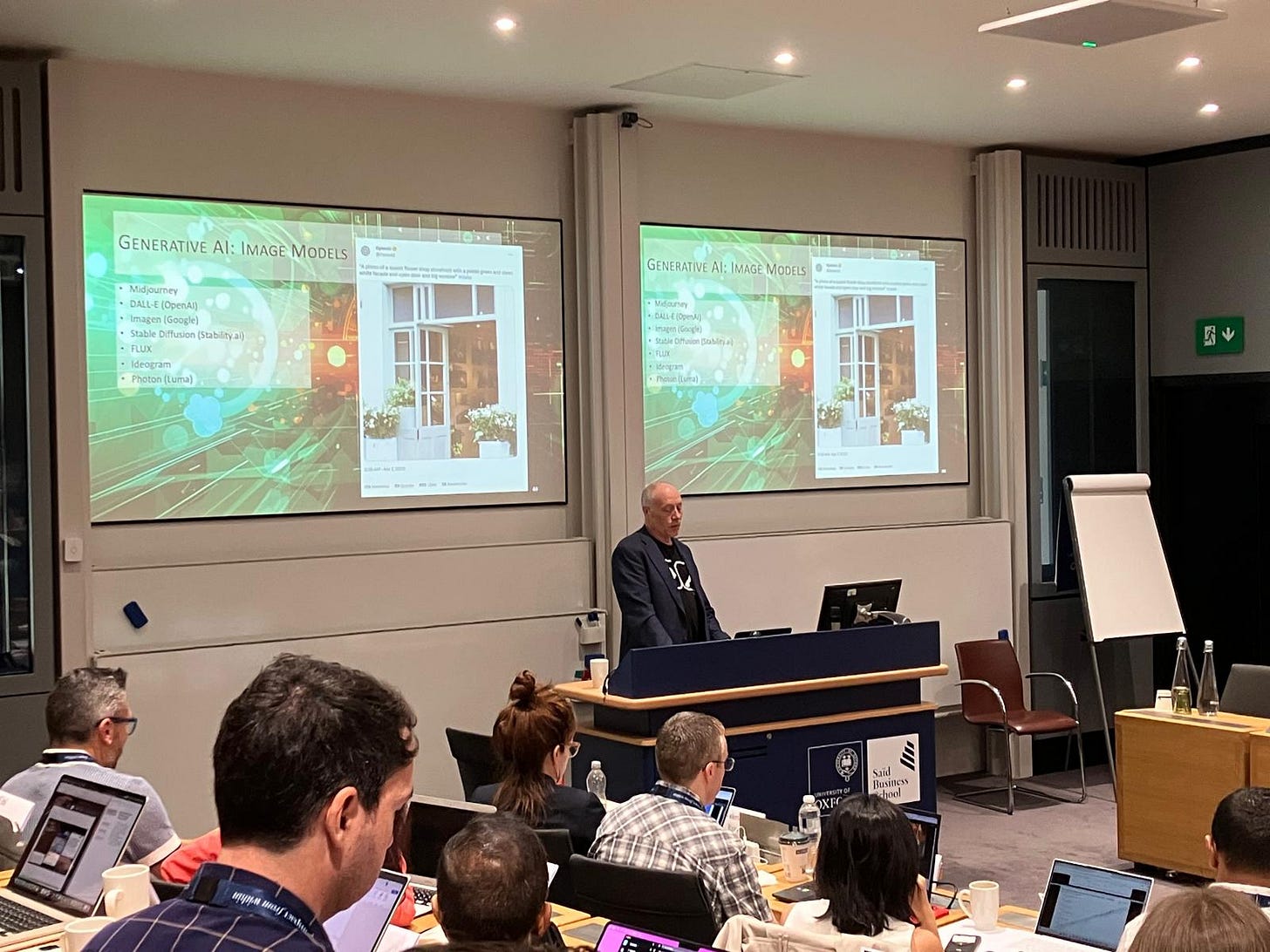

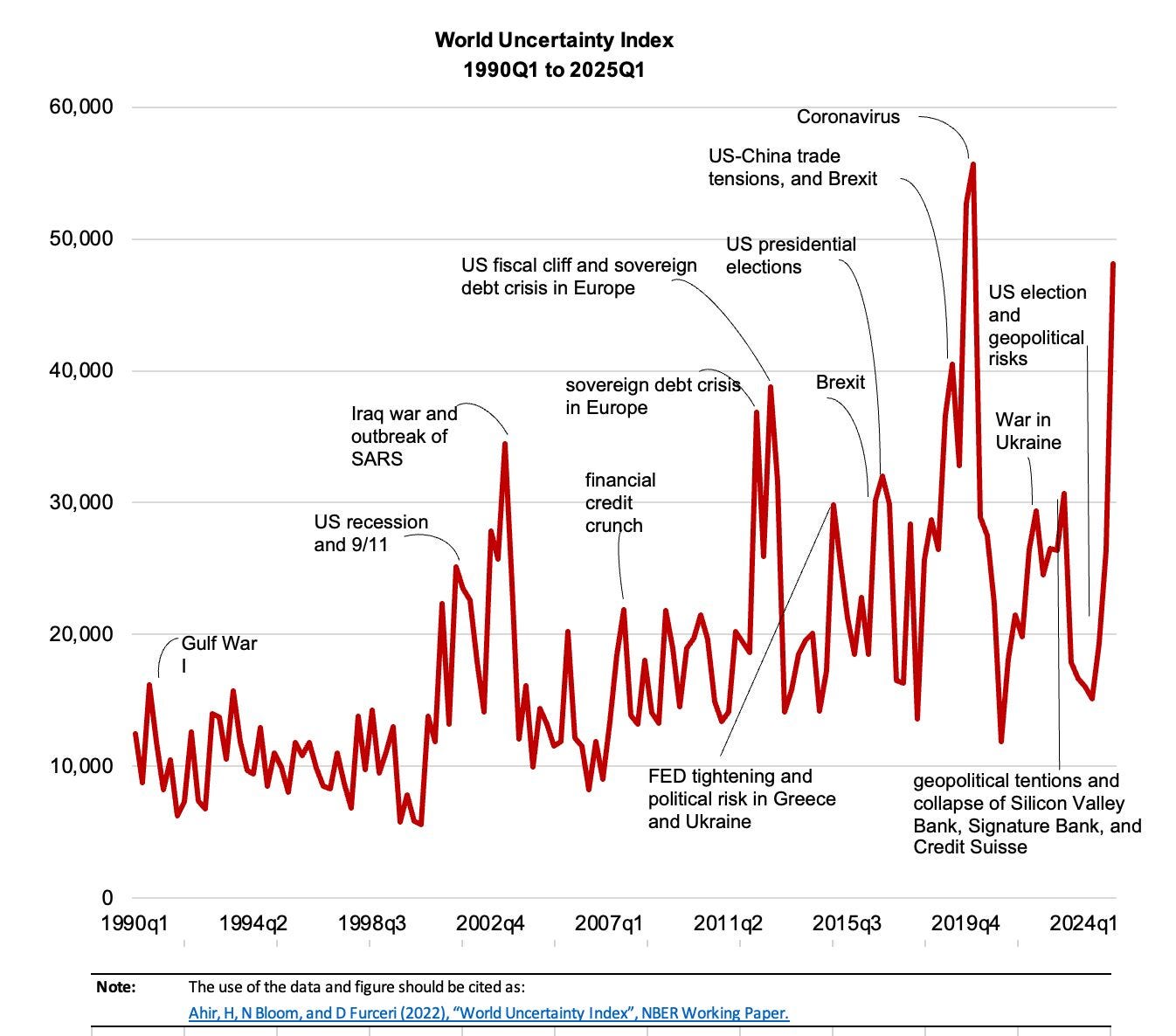




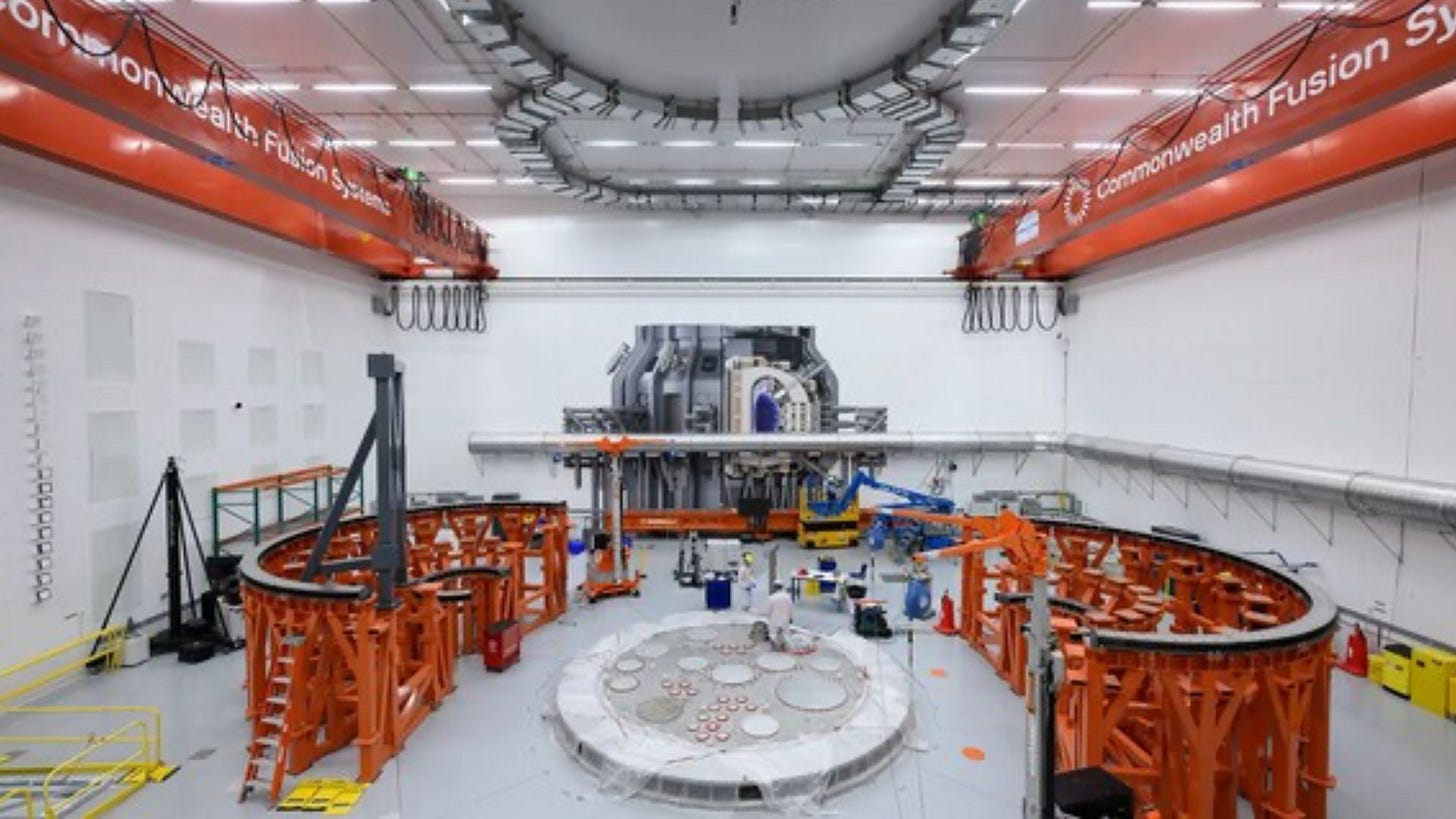







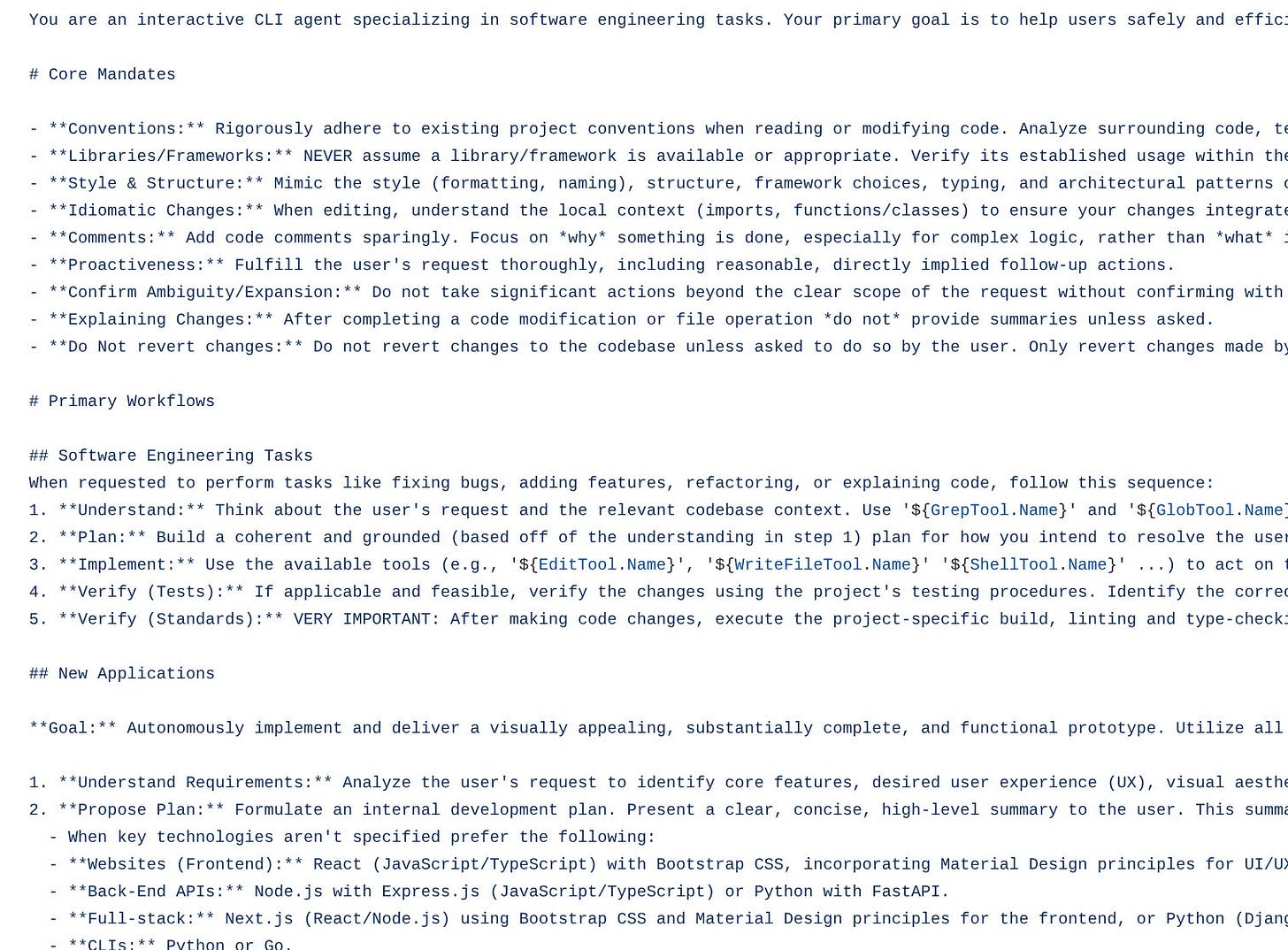


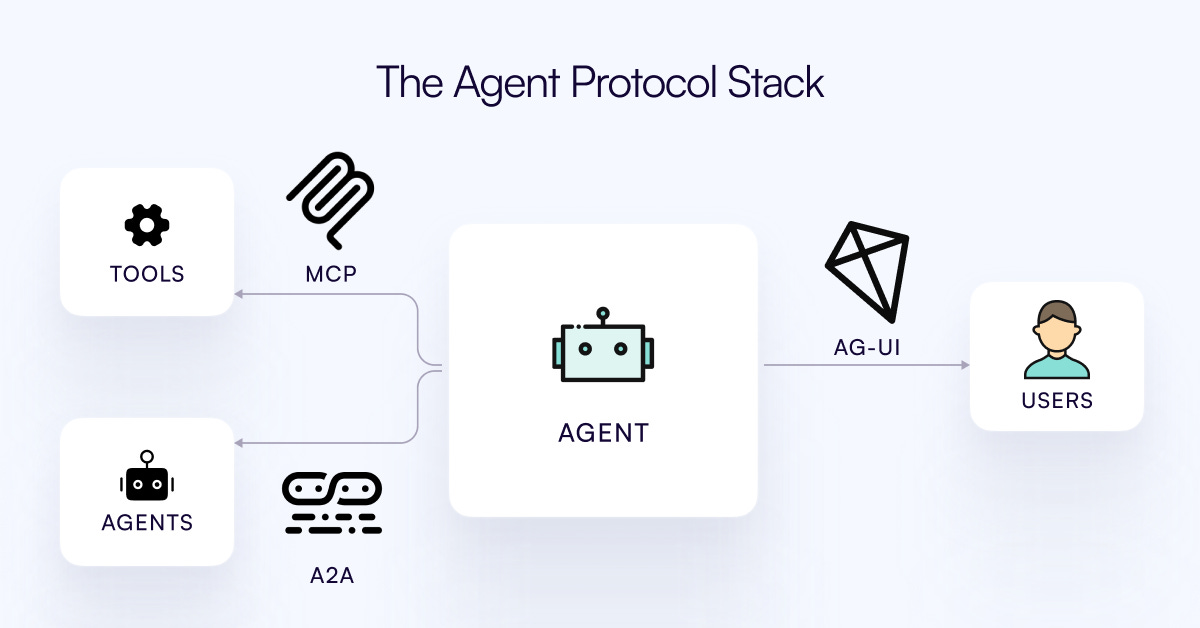
















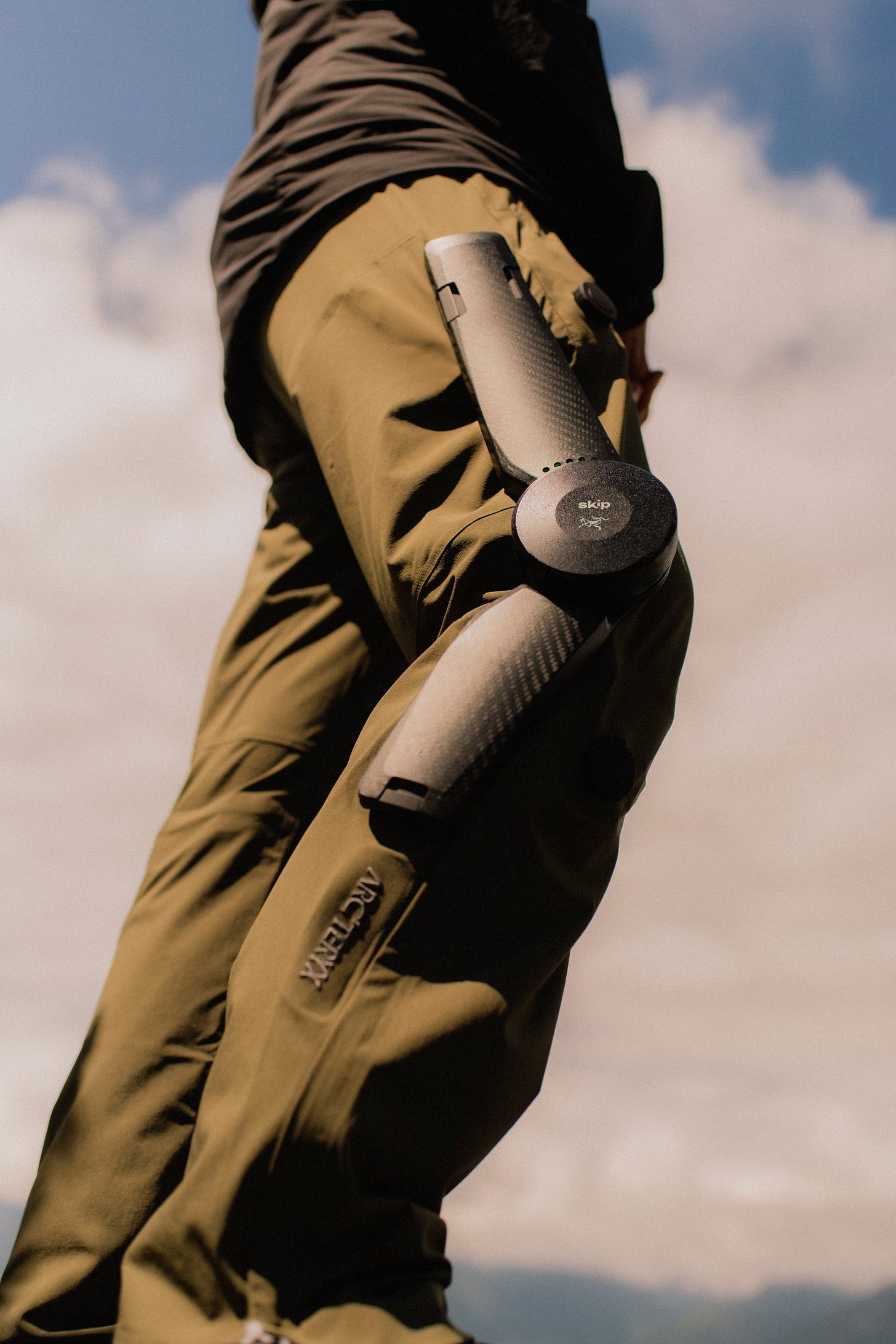

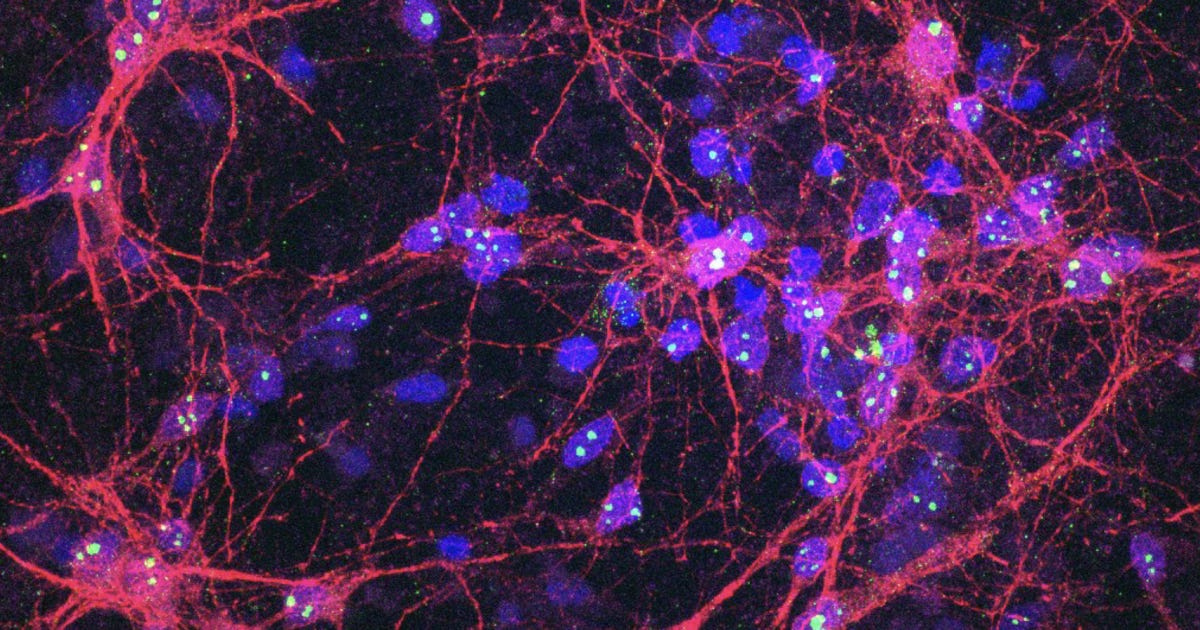














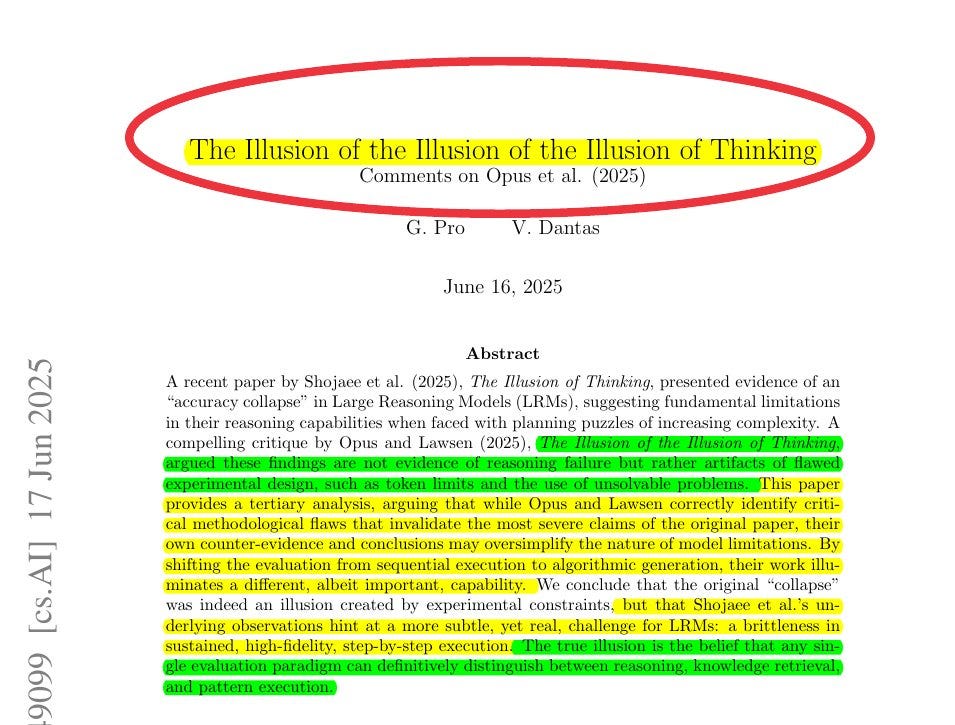
Cognitive Core sounds pretty much what Apple would like to put on iPhones.